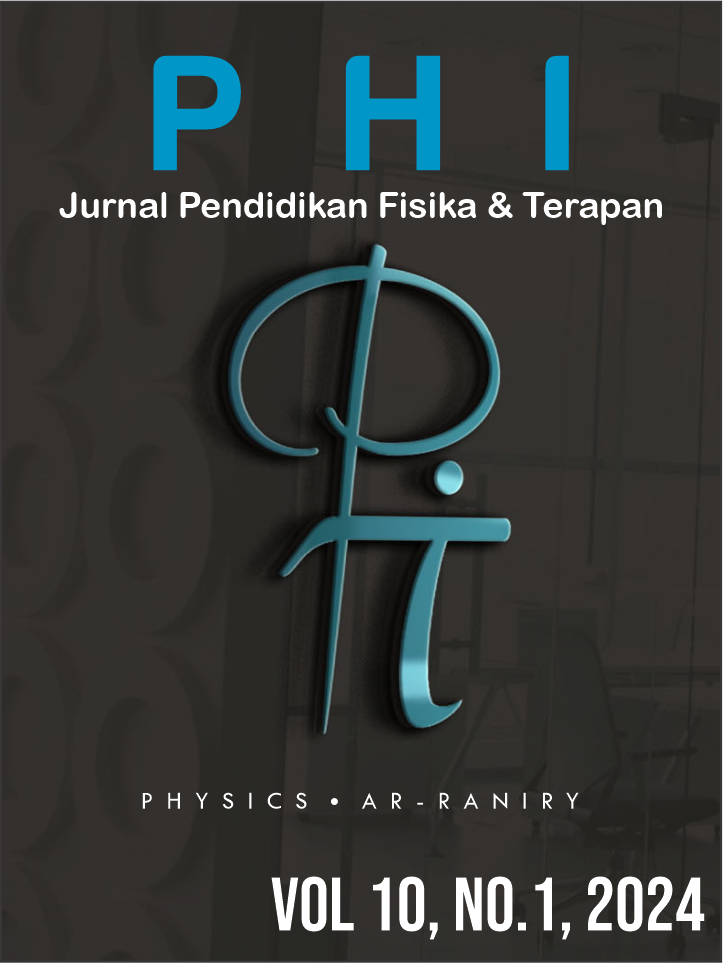Pengembangan Media Poster Terintegrasi Ayat-Ayat Al-Qur’an Pada Materi Tata Surya Di SMP/MTs
DOI:
https://doi.org/10.22373/p-jpft.v10i1.20305Abstract
This research aims to design integrated poster media with Al-Qur'an verses on solar system material and to determine the feasibility of integrated poster media with Al-Qur'an verses on solar system material. This research uses Research and Development (R&D) research with a 4D model developed by Thiagarajan. The 4D model has several stages consisting of the definition stage, the design stage, the development stage, and the final stage, namely the disseminate stage. The instrument used in this research was an expert validation sheet consisting of three experts, namely learning material experts, learning media experts, and Al-Qur'an interpretation experts. The product resulting from this research is an integrated poster media with verses from the Koran on the solar system. The results of material expert validation with the content feasibility aspect were 92.5%, the presentation feasibility aspect was 96.87% and the linguistic component aspect was 90.33%, with the average total of all scores obtaining a percentage result of 93.33%. Media expert validation with design feasibility aspects of 100%, content and objective quality aspects of 88.75%, instructional quality aspects of 93.75%, and technical aspects of 100%, with an average total of all scores resulting in a percentage of 95.62%.
Downloads
Published
Issue
Section
License
Authors who publish with Jurnal Phi agree to the following terms:
- Authors retain copyright and grant the journal right of first publication with the work simultaneously licensed under a Creative Commons Attribution License (CC BY 4.0) that allows others to share the work with an acknowledgment of the work's authorship and initial publication in this journal.
- Authors are able to enter into separate, additional contractual arrangements for the non-exclusive distribution of the journal's published version of the work (e.g., post it to an institutional repository or publish it in a book), with an acknowledgment of its initial publication in this journal.
- Authors are permitted and encouraged to post their work online (e.g., in institutional repositories or on their website) prior to and during the submission process, as it can lead to productive exchanges, as well as earlier and greater citation of published work (See The Effect of Open Access).

















